In my previous article, I had the occasion to highlight the genius of Dock Boggs, a.k.a. Moran Lee Boggs an influential old-time singer, songwriter and banjo player whose style of banjo playing, as well as his singing, is considered as a unique combination of Appalachian folk music and African-American blues. His work lead to me formulate some reflections on the unique melting pot music that had emerged in the 19th century Southern States as a result of the profound social changes that took place and which created a marvellous stew of American music out of different ethnic traditions : African and European-British. I asserted also that there existed a complex two-way interaction between black and white music.
For what follows, take yourself some chocolate drops, a cup of coffee if you like, and take a comfortable seat while I will further guide you on my tour in the archaeology of roots music.
As a start, let me note that the roots music is much more alive than you might guess. Music with a direct lineage of almost two centuries can be heard today when you go down in the New York City subway where you are likely to bump into the Ebony Hillbillies: a black string band whose objective is to ‘revive’ the sonic landscape of the African-American tradition of the black string band of the late 1800s and early 1900s. As one of its band members puts it: “At one time, there was a lot less difference between black and white culture in America. It was universally American. A lot of our leaders today are trying to separate people. I guess it’s good that we’re around to show that we’re not that far apart, still.”
The Ebony Hillbillies are not alone. Lou Novacheck, a freelance writer for a.o. the Elmore Magazine and Blues Underground drew my attention recently to a similar band which witnesses a growing popularity, The Carolina Chocolate Drops, an old-time string band with home basis in North Carolina. Their album, “Genuine Negro Jig” from 2010 has won the Grammy Award for Best Traditional Folk Album at the 53rd Annual Grammy Awards.
Both the Ebony Hillbillies as the Caroline Chocolate Drops illustrate that we need to dissociate skin colour from old-time string bands. When string bands come to our mind, we tend to think of white country music, bluegrass even, based on a combination of fiddle and banjo. Or, we are inclined to believe that the music of black string groups such as the Caroline Chocolate Drops build further on a tradition of exclusive white country music. There is sufficient material that contradicts those spontaneous thoughts which stem in fact from both a racial reading of history, as from the traces of the segregation rules that were set in the aftermath of the Civil War, and more particularly in the music industry from the early 20th century. There is indeed a relative scarcity of recorded old-time black string music, but the volume of this recording activity does not reflect what went on in the field. As a.o. Charles Wolfe has argued, the record companies segregated music into separate series, one meant for whites, the other one for blacks. The white rural music idiom included fiddle bands, banjo tunes, sentimental songs, and a few religious pieces. Black music series were supposed to be mainly country blues, gospel, and vaudeville blues numbers. A black band which played something other than blues (accompanied by guitar) did not quite fit into either stereotype, as a consequence of which only few of them were recorded.
Reality never fits stereotypes. Let me convince you.
In 2005, three young black musicians, Dom Flemons, Rhiannon Giddens, and Justin Robinson, travelled to Mebane, North Caroline, to gather in the home of old-time fiddler Joe Thompson for musical jam sessions which would lead to foundation of the above mentioned Caroline Chocolate Drops. Joe Thompson, born in 1918, was in his 80’s when he passed on his lessons to this new generation, just like he had learnt his lessons from his family. The very young Thompson when alone in his parent’s farmhouse when the adults were occupied elsewhere, would make his way into his parents’ bedroom to get his six-year-old hands on his daddy’s fiddle (Linda Seida). He owned his own child-sized fiddle, thanks to a friendly neighbour who raised money by selling seeds. The new fiddle lacked strings, but this didn’t stop him: he devised his own strings out of a wire screen. As a small youngster of only 7 years old, he joined the locally popular duo of his father and uncle, Walter and John Arch, who played for square dances. There the young Joe also joined John Arch’s son, Odell Thompson, who played the banjo and who later would turn to the blues guitar. Joe Thompson continued to perform throughout the 30s at Southern dances.
After their ‘re-discovery’ in the early 70s by Kip Lornell (a researcher at the Smithsonian Institute), Joe and Odell Thompson restarted actively performing at quite a number of festivals (including Australia), thus sharing their knowledge of string band music with a younger generation of listeners and musicians.
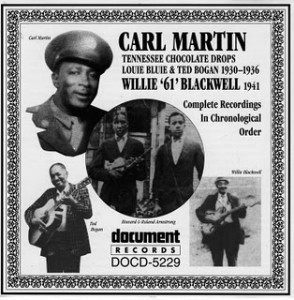 In the same line, the fiddler and mandolin player, but above all multi-instrumentalist (he played 22 instruments), Armstrong Howard (1909-2003) was subject to a revival throughout the 1980’s. He had been playing with Carl Martin and (the much underrated, versatile purveyor of many styles) Ted Bogan for much of his career. Other chocolate drops come to us here: in the pre-war era Howard, Bogan and Martin formed a string band known, at a particular moment, under the name of the Tennessee Chocolate Drops (their name in fact inspired the Caroline Chocolate Drops).
In the same line, the fiddler and mandolin player, but above all multi-instrumentalist (he played 22 instruments), Armstrong Howard (1909-2003) was subject to a revival throughout the 1980’s. He had been playing with Carl Martin and (the much underrated, versatile purveyor of many styles) Ted Bogan for much of his career. Other chocolate drops come to us here: in the pre-war era Howard, Bogan and Martin formed a string band known, at a particular moment, under the name of the Tennessee Chocolate Drops (their name in fact inspired the Caroline Chocolate Drops).
Carl Martin (1906-1979), born in Virginia, and son of a slave who also played the fiddle (known as Fiddlin’ Martin), was a born entertainer and he is said to have been able to play any instrument with strings. He played the blues, but he also played hoedowns, polkas, old and new pop songs, and anything else that would entertain and please the crowd. His life was a repository of a great deal of America’s musical and social experience. In the 30’s he and his aforementioned musical partners Bogan and Armstrong migrated via many stops to Chicago, where they continued to play, adding songs in German, French, Spanish, Polish, Yiddish, and even Chinese to appeal to people of all the different neighbourhoods where they would play. Carl Martin was part of a rich musical tradition in Appalachia – a tradition which mixed blues and ragtime with pop and the styles of white musicians from rural mountain communities.
This brings us to some questions: when did this string band music emerge? Were the bands black or white? When did the blacks start to play fiddle? When did the banjo and the fiddle meet? These are most interesting questions which touch the very essence of the emergence of the roots music, but to which to a high degree only provisional answers are available (for the moment) due to the lack of sufficient written/recorded material. This lack of material is probably due to the very fact that there has existed very little interest for these questions in the early days of the ethno-musicological explorations.
It may well be that the old-time string band music is the earliest form of musical collaboration between African American and European American (often Scottish-Irish) musicians. Recent studies by Epstein (2003) and Conway (2005) have tried to shed some light on the matter. 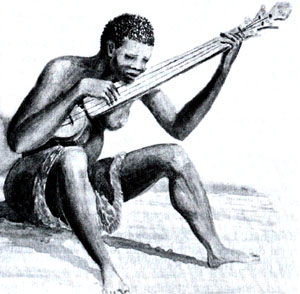
When British colonists settled in the upper Southern states – North Carolina, Tennessee, Virginia, Kentucky, and West Virginia – they brought along the violin (fiddle) and many traditional fiddle tunes. African Americans introduced the gourd banjo, together with their (syncopated) playing techniques, tunes, songs, and a variety of tuning methods. Conway documents how musicians from these ethnic groups met in the Upland South states and combined the elements of old-time string band, fiddle and banjo, together for the first time. The music that was played was suitable for both listening and dancing.
Epstein doubts the idea that the banjo, an African instrument, was infused in the musical tradition by (the sole) way of the minstrelsy shows. She argues that blacks have played an essential role in the creation of the string band music. In fact, she traces the evolution of all genres of African American folk music back to the use of African percussion instruments and the “banjar” which were meant to encourage dancing as exercise to maintain the health of slaves on board of the slave ships (and thus maintain the value of the commodity). She also puts forward a number of reports of African Americans playing percussion instruments and violins to entertain themselves and whites.
There are indeed indications of slaves who played the banjo and used percussion instruments in the American colonies in the mid-eighteenth century. Slaves are supposed to have played the fiddle as early as the late seventeenth century
Percussion instruments and ensembles are known to have been banned later on due to fears concerning their potential use as signals for slave insurrections (though in some regions they survived). It can be contented however that in the 18th century black fiddlers were as prevalent on the plantations as were banjo players. Slave fiddlers have played music for the plantation owners and also for their fellow slaves, combining polkas, marches, jigs and reels of the European tradition, but tuned according to syncopated rhythms and tonalities derived from Africa. John Griffith (2010) asserts that this possibility to play music and to interact with fellow slaves during community events, gave the African Americans a sense of rarely experienced individualism and intimacy in a social context which otherwise completely dehumanized them. 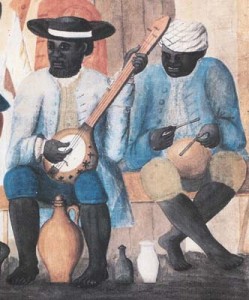
The material on when violin and banjo were played together in an ensemble is open for more discussion. Though there are some indications that already in 1774 these stringed instruments are being reported in proximity to each other, it is not clear whether they were played together. Epstein thinks that the banjo and the fiddle were probably indeed played together already then. Conway however disagrees and suggests that the combination of fiddle and banjo dates back to a few decades later, to the 1850’s.
The first definitive registered example of an instrumental grouping of banjo combined with fiddle is the white minstrel group, the Virginia Minstrels, a group which is said to have premiered to a paying audience probably on January 31, 1843. Unlike earlier blackface acts that featured solo singers or dancers, the Virginia Minstrels appeared as a group in blackface who performed more elaborate shows. However, there is a point to be made that, regardless of which race first played banjo and fiddle in harmony, African Americans influenced the sound and the repertoire of those early antebellum blackface (white) minstrel groups. They taught the first generation of white banjoists how to play. Whitlock, one of the founding members of the Virginia Minstrels, claimed to have met America’s pre-eminent banjoist and early blackface minstrel performer, Joel Sweeney, and to have taken some banjo lessons from him. Joel Sweeney is the earliest known person to have played the banjo on stage. According to a 1969 article in “The Iron Worker”, a trade publication of the Lynchburg Foundry Co. of Lynchburg, Joel Sweeney had learned to play a four-string gourd banjo at young age from the black men working on his father’s plantation in Virginia. He also learned to play the fiddle, sing, dance, and imitate animal sounds. Until this time, all performances on the banjo seem to have been from black players.
The success of the blackface minstrelsy was a vehicle which popularised the Southern old-time string band music. Banjo and fiddle dominated the 19th century musical entertainment scene. Starting with the Virginia Minstrels’ first public performance minstrelsy became hugely popular all over the country for the next fifty or more years. In this way, minstrelsy and old-time string band music became closely intertwined. As Conway asserts early minstrels and string band musicians borrowed banjo techniques, tuning methods, some songs and tunes from the same source: namely, African American banjoists. From a comparison of methods of tuning the banjo among African American, minstrel, and white Appalachian musicians, Conway concludes that blacks and white Appalachian musicians shared several tuning methods that the minstrels did not use. Following this, she is convinced that white Appalachian musicians learned these tunings directly from African Americans and not from minstrels.
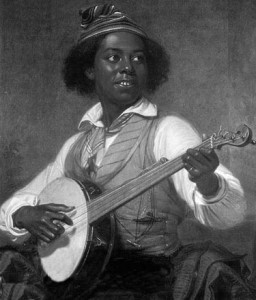 Both the minstrelsy bands and the early string bands were inspired by tunes in the Scottish and Irish repertoires, just as white and black old-time string bands listened carefully to the tunes played by the minstrels. Epstein contends that separating authentic African American folk music from songs written for or adapted from European sources for the minstrel stage is “particularly difficult because slaves quickly took up [minstrel] songs and sang what they learned was expected of them.” When, after the Civil War, African Americans painted their face black to join professional singers and to perform as minstrels (the shows were however ‘owned’ by the white) they became the expert in the slaves’ and plantation music. Some of those new African American minstrels borrowed traditional material, but some also added material of their own, as for instance James Bland did : he wrote over 700 songs, including “Carry Me Back to Old Virginny”, published in 1878, which, in a slightly different version, was the official State Song of Virginia from 1940-1997. He was often called “The World’s Greatest Minstrel Man” and toured the United States, as well as Europe.
Both the minstrelsy bands and the early string bands were inspired by tunes in the Scottish and Irish repertoires, just as white and black old-time string bands listened carefully to the tunes played by the minstrels. Epstein contends that separating authentic African American folk music from songs written for or adapted from European sources for the minstrel stage is “particularly difficult because slaves quickly took up [minstrel] songs and sang what they learned was expected of them.” When, after the Civil War, African Americans painted their face black to join professional singers and to perform as minstrels (the shows were however ‘owned’ by the white) they became the expert in the slaves’ and plantation music. Some of those new African American minstrels borrowed traditional material, but some also added material of their own, as for instance James Bland did : he wrote over 700 songs, including “Carry Me Back to Old Virginny”, published in 1878, which, in a slightly different version, was the official State Song of Virginia from 1940-1997. He was often called “The World’s Greatest Minstrel Man” and toured the United States, as well as Europe.
Minstrelsy declined in popularity in the late 1890s, and was gradually replaced by other forms of popular entertainment such as musical theatre or vaudeville. Minstrelsy groups could continue to perform as travelling entertainment, but for primarily black audiences. This evolution went together with the beginning of the recording industry during which many of the earliest African American recording artists were building up their repertoire. In the wake of W.C. Handy’s meeting with the legendary guitar player in the train station of Tutweiler in 1903, the 1910’s witnessed a huge popularity of vaudeville blues (performed by white) which became popular on stage also in the Northern States. This vaudeville blues was followed by the first wave of recorded blues by blacks after 1920 which was in the first part of the twenties female and vocal.
As we know, the record companies largely (though not completely) ignored the wealth of the existing African American string bands The ‘race records’ were associated first with female vocal artists and in a further stage with the male, country blues artist (playing his guitar). The musical wealth of the black string bands did not fit in the marketing strategies of the new music business. This music was considered as outdated and the record companies didn’t want to take any financial risk to issue this genre that was considered to be unsuitable for the market. The names of genius performers as Joe Thompson, Ted Bogan, Carl Martin and Armstrong Howard would remain in the shadow of icons as Blind Lemon Jefferson, Charley Patton and Robert Johnson. The string band genre underwent however the impact of the new technology: existing string bands started to adapt their repertoire to enable the connection with the market. Some artists were active on both the string band scene as the guitar blues stage (see for instance ‘Peg Leg’ Howell).
In any case, many a blues artist who made fame in the twenties or thirties had his roots in the old string band tradition and the minstrelsy, and had played the banjo and/or fiddle in their early career (Lonnie Johnson is a clear example of this). The guitar however, sometimes combined with the mouth harmonica, had become the main instrument of the sonic landscape, pushing to the background the banjo and fiddle, which had been at the core of the complex music evolution that predated and partially paralleled the blues.
Bands such as the Ebony Hillbillies and the Caroline Chocolate Drops fortunately help us to remind that blues, jazz, ragtime and other genres have their roots in a rich and deep interplay of warm and vital black and white string music which is the basis for the very particular fabric of American and modern popular music. As a band member of the Chocolate Drops has formulated it : “(This music) means taking the past into the present into the future, (like) a bird flying forward but touching its wings to its back — in other words, taking the past into the future with it.”
If you haven’t finished your chocolate drops yet reading this article, you can have a further taste of the Carolina Chocolate Drops on this video on their website.
Sources:
________
– http://www.thegrio.com/entertainment/ebony-hillbillies-bring-down-home-sound-to-streets-stage.php
– http://www.charlestoncitypaper.com/charleston/the-ebony-hillbillies-go-underground-with-their-old-timey-jams/Content?oid=2027656
– Charles Wolfe, “Rural Black String Band Music,” Black Music Research Journal 10, no. 1 (1990): 33.
– http://www.thefreelibrary.com/African+American+old-time+string+band+music%3A+a+selective+discography.-a0179615963
– http://www.allmusic.com/artist/joe-thompson-p131609/biography
– http://www.bluesmandolin.de/page11.html
– Dena J. Epstein : Sinful Tunes and Spirituals: Black Folk Music to the Civil War (Music in American Life), 2003
– Cecilia Conway : African Banjo Echoes in Appalachia: A Study of Folk Traditions (Publications of The American Folklore Society), 1995
– http://www.cgim.org/sweeneyclan/misc/musical.html
– http://www.pbs.org/americanrootsmusic/pbs_arm_ii_fiddle.html
– John Griffith, Sports in Shackles: The athletic and recreational habits of slaves on Southern Plantations, 2010 (Voces Novae : Chapman University Historical Review, vol. 2, n° 1)
– http://en.wikipedia.org/wiki/Virginia_Minstrels
– http://gotriad.news-record.com/content/2010/01/13/article/old_time_string_music_comes_alive_again
– http://www.nytimes.com/2003/08/02/arts/howard-armstrong-94-string-band-fiddler-and-mandolinist.html
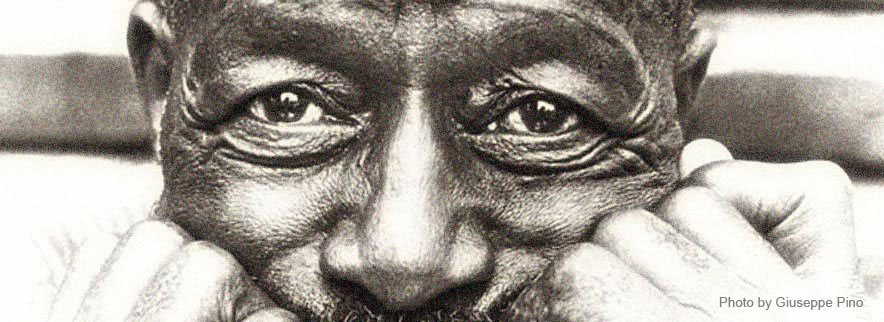
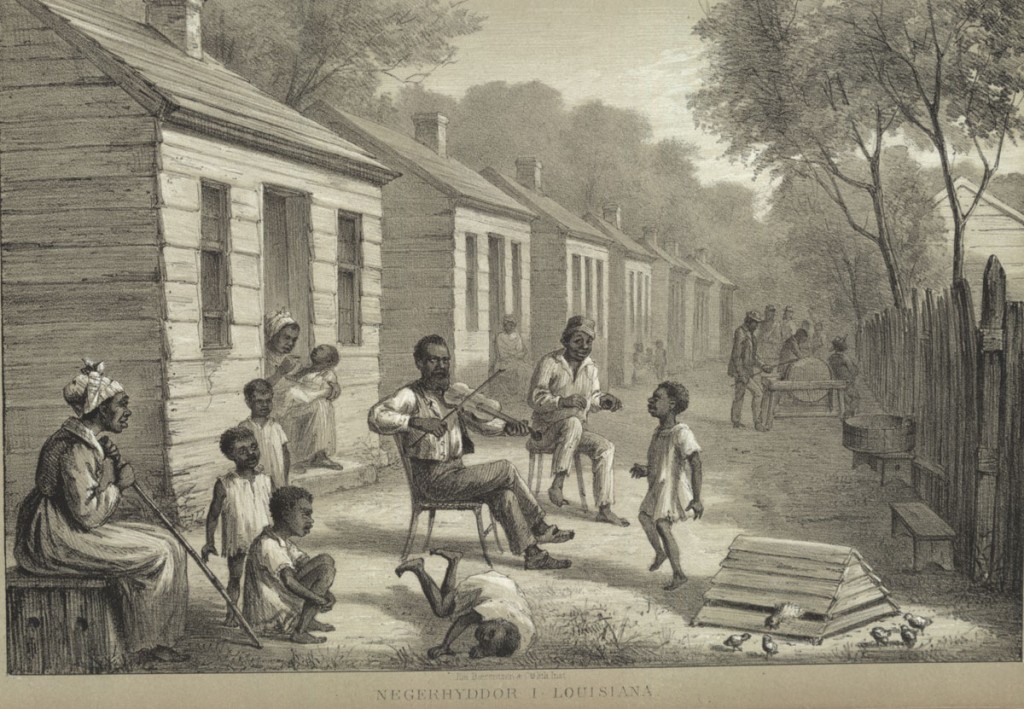
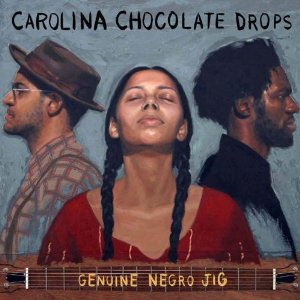

[…] Continue Article Here… http://www.myblues.eu/blog/?p=1285 […]